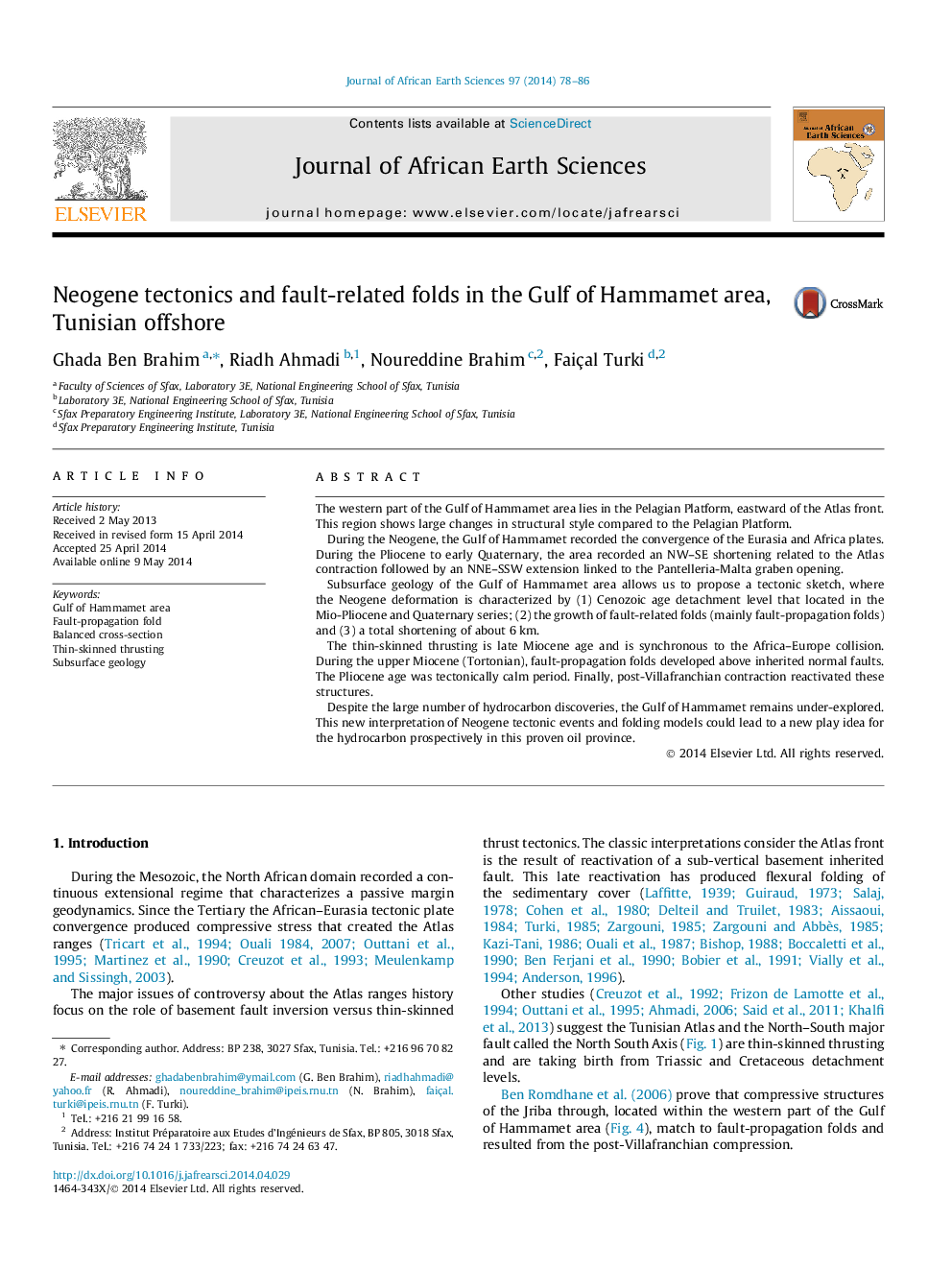| کد مقاله | کد نشریه | سال انتشار | مقاله انگلیسی | نسخه تمام متن |
|---|---|---|---|---|
| 4728773 | 1640209 | 2014 | 9 صفحه PDF | دانلود رایگان |
• Compressive structures in the western part of the Gulf of Hammamet area.
• Fault-related folds.
• Tertiary detachment level.
The western part of the Gulf of Hammamet area lies in the Pelagian Platform, eastward of the Atlas front. This region shows large changes in structural style compared to the Pelagian Platform.During the Neogene, the Gulf of Hammamet recorded the convergence of the Eurasia and Africa plates. During the Pliocene to early Quaternary, the area recorded an NW–SE shortening related to the Atlas contraction followed by an NNE–SSW extension linked to the Pantelleria-Malta graben opening.Subsurface geology of the Gulf of Hammamet area allows us to propose a tectonic sketch, where the Neogene deformation is characterized by (1) Cenozoic age detachment level that located in the Mio-Pliocene and Quaternary series; (2) the growth of fault-related folds (mainly fault-propagation folds) and (3) a total shortening of about 6 km.The thin-skinned thrusting is late Miocene age and is synchronous to the Africa–Europe collision. During the upper Miocene (Tortonian), fault-propagation folds developed above inherited normal faults. The Pliocene age was tectonically calm period. Finally, post-Villafranchian contraction reactivated these structures.Despite the large number of hydrocarbon discoveries, the Gulf of Hammamet remains under-explored. This new interpretation of Neogene tectonic events and folding models could lead to a new play idea for the hydrocarbon prospectively in this proven oil province.
Journal: Journal of African Earth Sciences - Volume 97, September 2014, Pages 78–86
